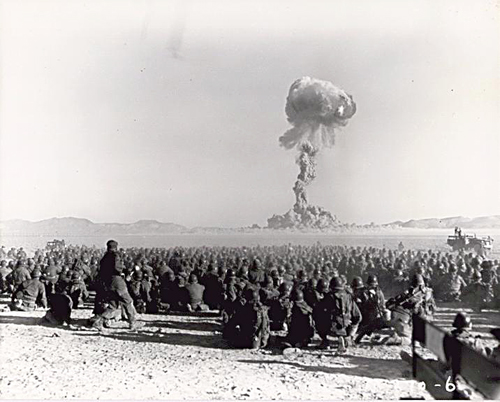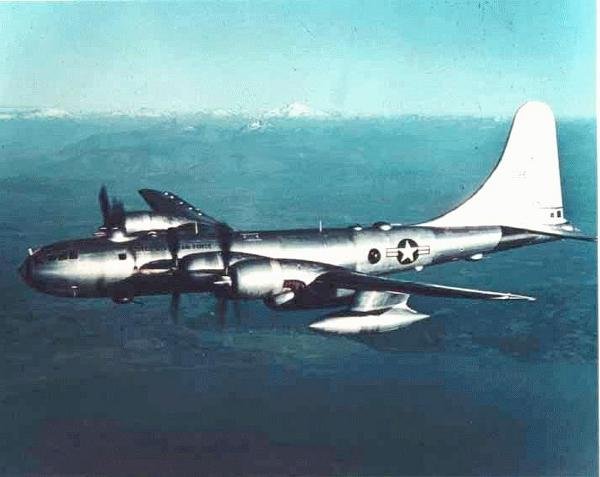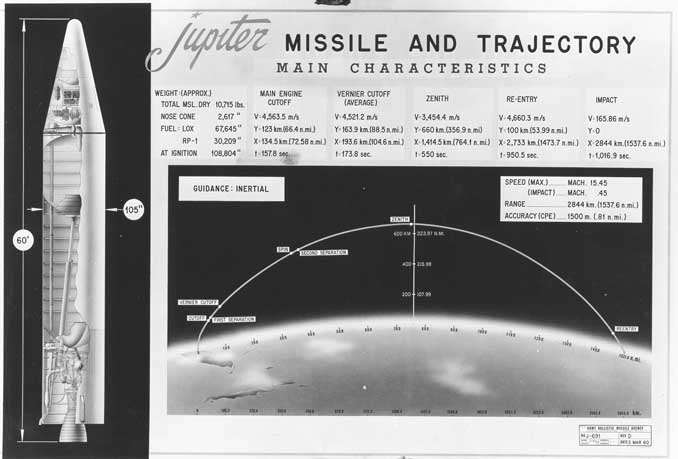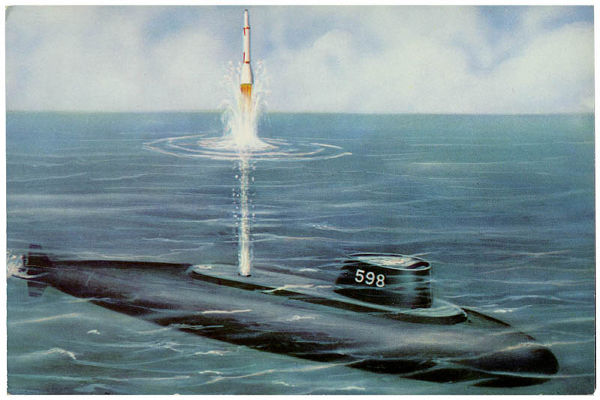
Let me tell you the story of a missile, one that should make us (ironically) a bit safer.
Wehrner von Braun and his German team of scientists in Alabama developed a short-ranged nuclear missile called the Redstone back in 1953. It was an evolution of the wartime V-2. Then his team created the Jupiter intermediate-ranged nuclear missile, which has been used to launch a number of satellites into orbit, and which is in the process of being deployed in Italy and Turkey to threaten the Soviet Union.
There was originally an intent to mount the Jupiter missile on submarines. This is the reason for its unusually squat shape–it was supposed to fit inside the tubes of a mammoth submersible ship. The Navy quickly thought better of this idea and developed their own sub-launched missile–the Polaris. Propelled by solid fuels, unlike the liquid-fueled Jupiter, the Polaris was recently test-flown for the first time.
This marks the beginning of a whole new era of nuclear warfare: Submarines are about to constitute the third leg of an atomic weapon triad.

The first leg of the triad is the bomber, which has been a vehicle for nuclear weapon delivery since 1945. Their weakness is that they can be shot down before dropping a bomb, and they take a comparatively long time to get to target. On the other hand, they can be recalled or redirected as needed.

Missiles are the second leg, and have just come on station this year. They include the Thor and Jupiter IRBMs and the new Atlas, Titan, and Minuteman ICBMs coming on-line shortly. Missiles are incredibly fast and cannot be shot down. They also cannot be recalled or redirected.
Both bombers and missiles can be destroyed on the ground by an enemy first-strike. This is a dangerous situation for two nuclear superpowers to be in. It ensures that both countries are always looking for an opportunity to deliver a knock-out punch, which could come at any time. Bomber crews must be ready to scramble at a moment's notice. Missile crews must be trained to launch their "birds" in minutes to get their weapons off the ground before being hit. That readiness to retalliate at the first sign of a radar blip will check the other side's willingness to fire preemptively, but it also means a single mistake could bring about armageddon. Hair-triggers are dangerous things.
This is why submarines are so important. The enemy will never know where they are at any given time, thus they cannot be destroyed by a first-strike. They can fire from almost anywhere, and they can be redirected and recalled like bombers. They provide insurance that, even if the Soviets manage to destroy our missile and bomber forces in a first-strike, we will have a powerful retaliatory force. They will help relieve pressure on the nuclear "button."

Of course, the Polaris isn't deployed yet. For the next few years, we have a window of heightened tension wherein an Alas, Babylon scenario is possible, perhaps probable.
Here's hoping that the world makes it to 1965 without blowing itself up.
—
P.S. Galactic Journey is now a proud member of a constellation of interesting columns. While you're waiting for me to publish my next article, why not give one of them a read!
(Confused? Click here for an explanation as to what's really going on)
This entry was originally posted at Dreamwidth, where it has comments. Please comment here or there.

